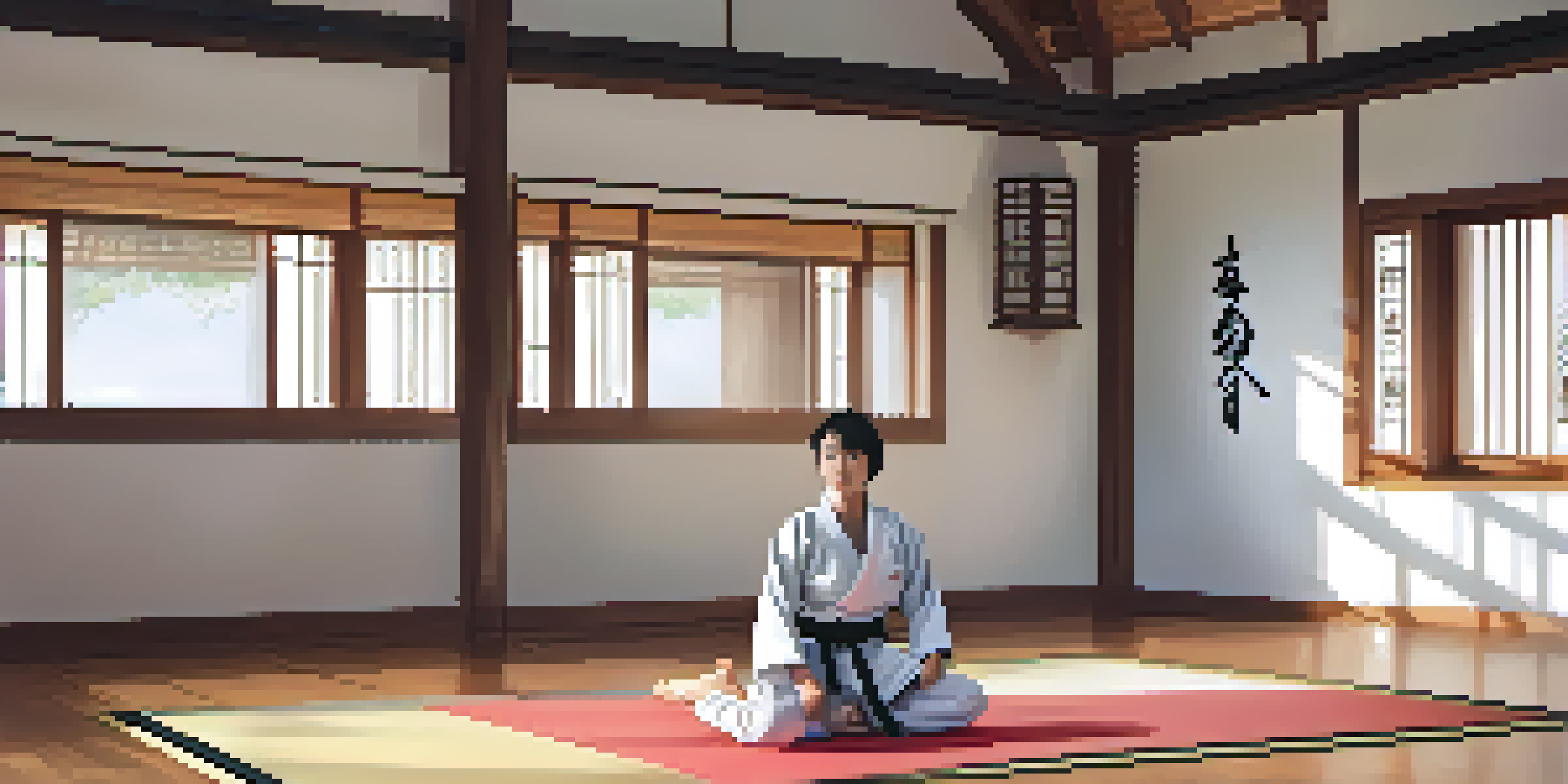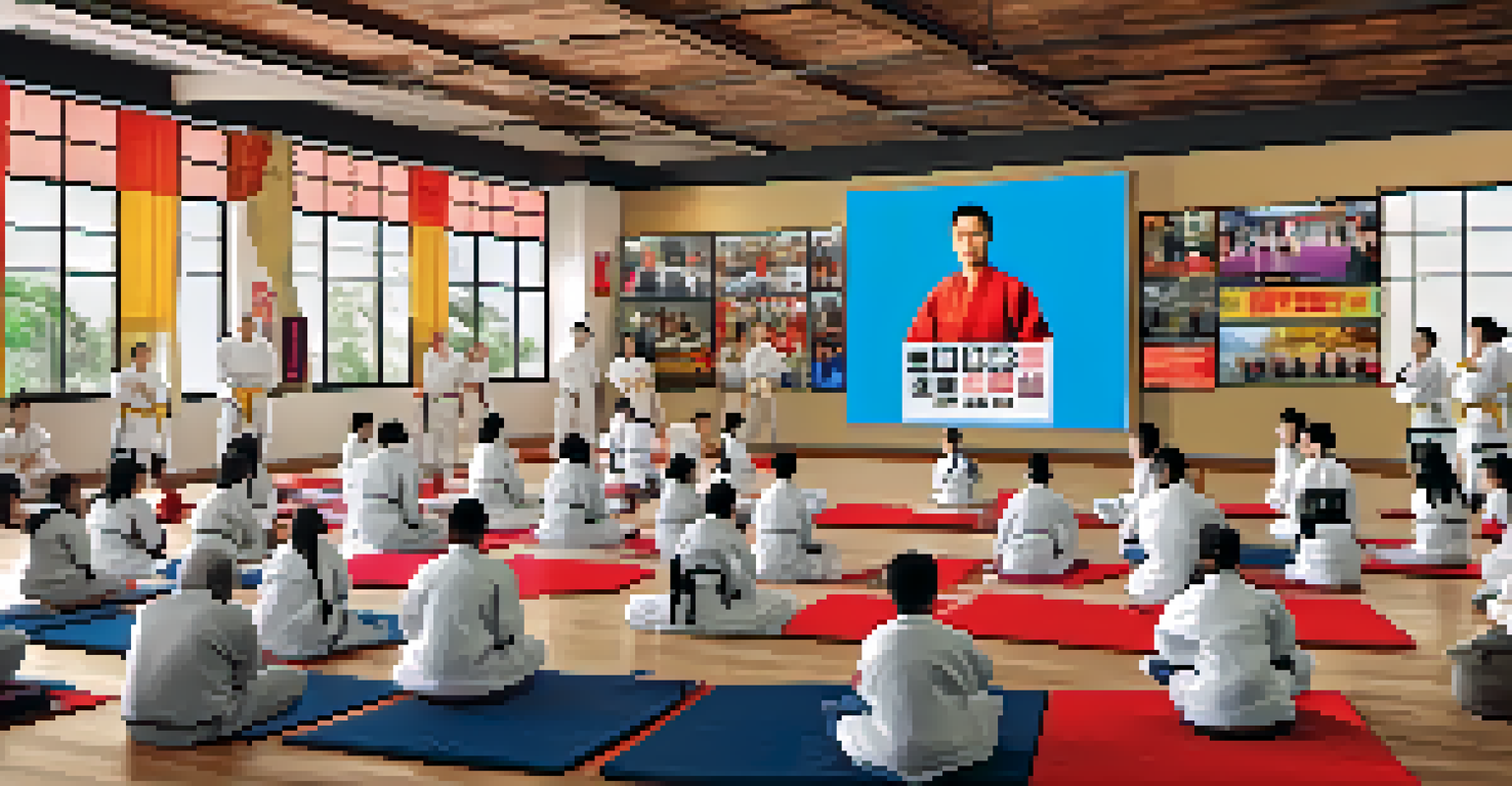Virtual Martial Arts Classes: Adapting to Digital Learning

The Rise of Virtual Martial Arts Classes in Recent Years
In recent years, virtual martial arts classes have surged in popularity, largely driven by advancements in technology and the need for remote learning options. Many traditional studios faced challenges during lockdowns, prompting them to pivot to online formats. This shift not only allowed students to continue their training but also opened doors for new learners who might not have access to local studios.
The journey of a thousand miles begins with one step.
Imagine being able to learn martial arts from a world-class instructor who lives thousands of miles away. With virtual classes, this is now a reality! Participants can join live sessions or watch recorded lessons, making it easier than ever to fit training into busy schedules.
As a result, martial arts communities have become more global and interconnected, fostering friendships and collaboration among practitioners from diverse backgrounds. This virtual landscape is not just a temporary fix; it has reshaped how we think about martial arts training.
Benefits of Learning Martial Arts Online
One of the biggest advantages of virtual martial arts classes is flexibility. Students can train from the comfort of their homes, eliminating travel time and allowing them to create a personalized training space. Whether it’s a living room or backyard, the options are endless.

Additionally, online classes often come at a lower cost compared to in-person sessions. Users can choose from various subscription models, making martial arts more accessible for everyone. This affordability opens the door for those who may have previously considered it out of reach.
Growth of Online Martial Arts
The shift to virtual martial arts classes has expanded access to training, allowing students worldwide to learn from top instructors.
Moreover, online platforms provide a wealth of resources, including instructional videos, forums, and community support. This combination of accessibility and variety enriches the learning experience, allowing students to grow at their own pace while still feeling connected to their instructors and peers.
Challenges Faced by Virtual Martial Arts Instructors
While virtual learning offers numerous benefits, it also poses unique challenges for instructors. One major hurdle is maintaining engagement and motivation among students, especially when classes are conducted through a screen. Instructors must find creative ways to keep energy levels high and ensure students are fully participating.
Success is the sum of small efforts, repeated day in and day out.
Another challenge is providing personalized feedback. In a physical class, instructors can easily correct a student's form or technique with a hands-on approach. However, in a digital format, they must rely on verbal cues and visual demonstrations, which can sometimes lead to misunderstandings.
Additionally, instructors must grapple with varying levels of technical proficiency among their students. While some may be tech-savvy, others might struggle with connectivity issues or navigating the platform, which can disrupt the flow of the class.
Creating an Effective Home Training Environment
For successful virtual martial arts training, creating a conducive home environment is crucial. Students need an adequate space free from distractions, allowing them to focus fully on their practice. This could mean clearing out a corner of a room or utilizing outdoor areas when weather permits.
Moreover, having the right equipment can enhance the training experience. While many martial arts can be practiced with just body weight, items like mats, striking pads, or even mirrors can help students improve their skills and gain confidence.
Flexibility and Accessibility
Online classes offer students the flexibility to train at home, often at a lower cost, making martial arts more accessible.
Lastly, students should consider their technology setup, ensuring they have a reliable internet connection and a device that can effectively display the instructor’s movements. A well-thought-out setup can make all the difference in maintaining motivation and achieving training goals.
Building Community in Virtual Martial Arts Classes
One of the most beautiful aspects of martial arts is the sense of community it fosters. Virtual classes have adapted to this need by incorporating chat features, social media groups, and virtual competitions. These tools allow students to connect, share experiences, and support each other on their martial arts journeys.
Instructors often encourage group activities, such as virtual sparring sessions or challenges, to maintain camaraderie among students. This not only adds excitement but also reinforces the idea that they are part of something bigger, even in a digital format.
Additionally, online platforms can host webinars or Q&A sessions with experts, offering students opportunities to learn more about martial arts philosophy, history, and techniques. This enriched community engagement can lead to deeper connections and a more fulfilling training experience.
The Future of Virtual Martial Arts Training
As technology continues to evolve, the future of virtual martial arts training looks promising. Innovations such as virtual reality (VR) and augmented reality (AR) are set to enhance the learning experience, providing immersive environments that mimic real-life interactions. Imagine training alongside a virtual partner who responds to your movements!
Moreover, the combination of online and in-person classes could create a hybrid model that offers the best of both worlds. Students might choose to attend some classes in person while supplementing their training with online sessions, creating a more tailored learning experience.
Building Community Remotely
Virtual martial arts classes foster community through interactive features, encouraging connection and support among practitioners.
Ultimately, the adaptability of virtual martial arts classes is a testament to the resilience of both instructors and students. As they continue to innovate and embrace digital tools, the future of martial arts training holds exciting possibilities for growth and connection.
Tips for Success in Virtual Martial Arts Training
To truly thrive in virtual martial arts classes, students should establish a consistent routine. Setting aside specific times for training not only builds discipline but also helps create a sense of normalcy in an otherwise hectic world. Treating these sessions with the same importance as in-person classes can lead to greater success.
Engaging with instructors and fellow students is equally important. Asking questions, sharing progress, and participating in discussions can foster a sense of belonging and keep motivation levels high. Don't hesitate to reach out for help or clarification on techniques!

Finally, self-reflection plays a key role in the learning process. Taking time to assess progress, set goals, and adjust training methods can lead to a more rewarding journey in martial arts. Remember, it's not just about the destination; it's about enjoying the process and celebrating each achievement along the way.